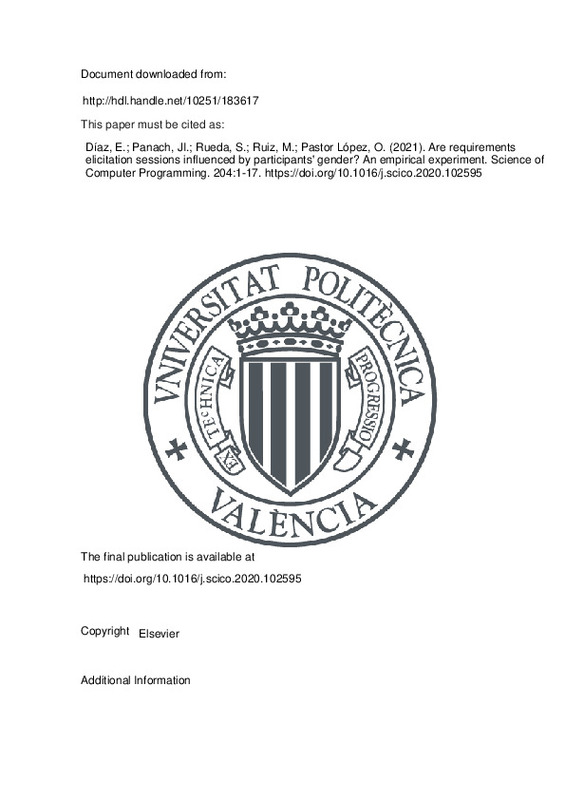JavaScript is disabled for your browser. Some features of this site may not work without it.
Buscar en RiuNet
Listar
Mi cuenta
Estadísticas
Ayuda RiuNet
Admin. UPV
Are requirements elicitation sessions influenced by participants' gender? An empirical experiment
Mostrar el registro completo del ítem
Díaz, E.; Panach, JI.; Rueda, S.; Ruiz, M.; Pastor López, O. (2021). Are requirements elicitation sessions influenced by participants' gender? An empirical experiment. Science of Computer Programming. 204:1-17. https://doi.org/10.1016/j.scico.2020.102595
Por favor, use este identificador para citar o enlazar este ítem: http://hdl.handle.net/10251/183617
Ficheros en el ítem
Metadatos del ítem
| Título: | Are requirements elicitation sessions influenced by participants' gender? An empirical experiment | |
| Autor: | Díaz, Eduardo Panach, José Ignacio Rueda, Silvia | |
| Entidad UPV: |
|
|
| Fecha difusión: |
|
|
| Resumen: |
[EN] Context: Requirements elicitation is a crucial phase in the software development life cycle. During requirements elicitation sessions, requirements engineers capture software requirements, and motivate stakeholders ...[+]
|
|
| Palabras clave: |
|
|
| Derechos de uso: | Reconocimiento - No comercial - Sin obra derivada (by-nc-nd) | |
| Fuente: |
|
|
| DOI: |
|
|
| Editorial: |
|
|
| Versión del editor: | https://doi.org/10.1016/j.scico.2020.102595 | |
| Código del Proyecto: |
|
|
| Agradecimientos: |
The first author has the support of the Ministry of Education of Peru with the National Scholarship Program PRONABEC - Republic President. This project also has the support of Spanish Ministry of Science and Innovation ...[+]
|
|
| Tipo: |
|







![[Cerrado]](/themes/UPV/images/candado.png)


